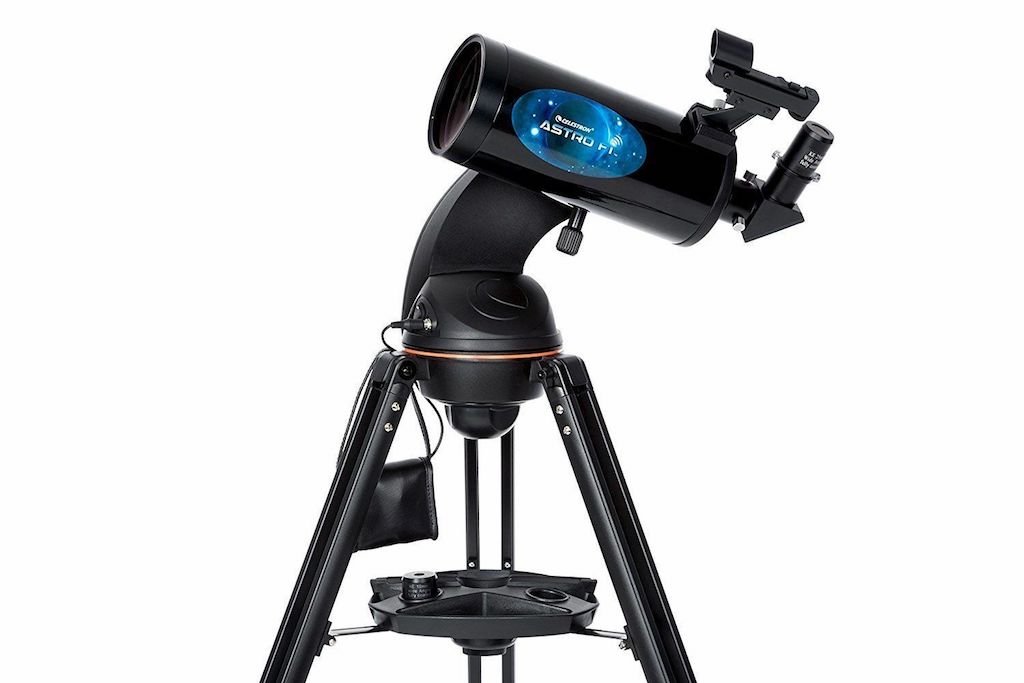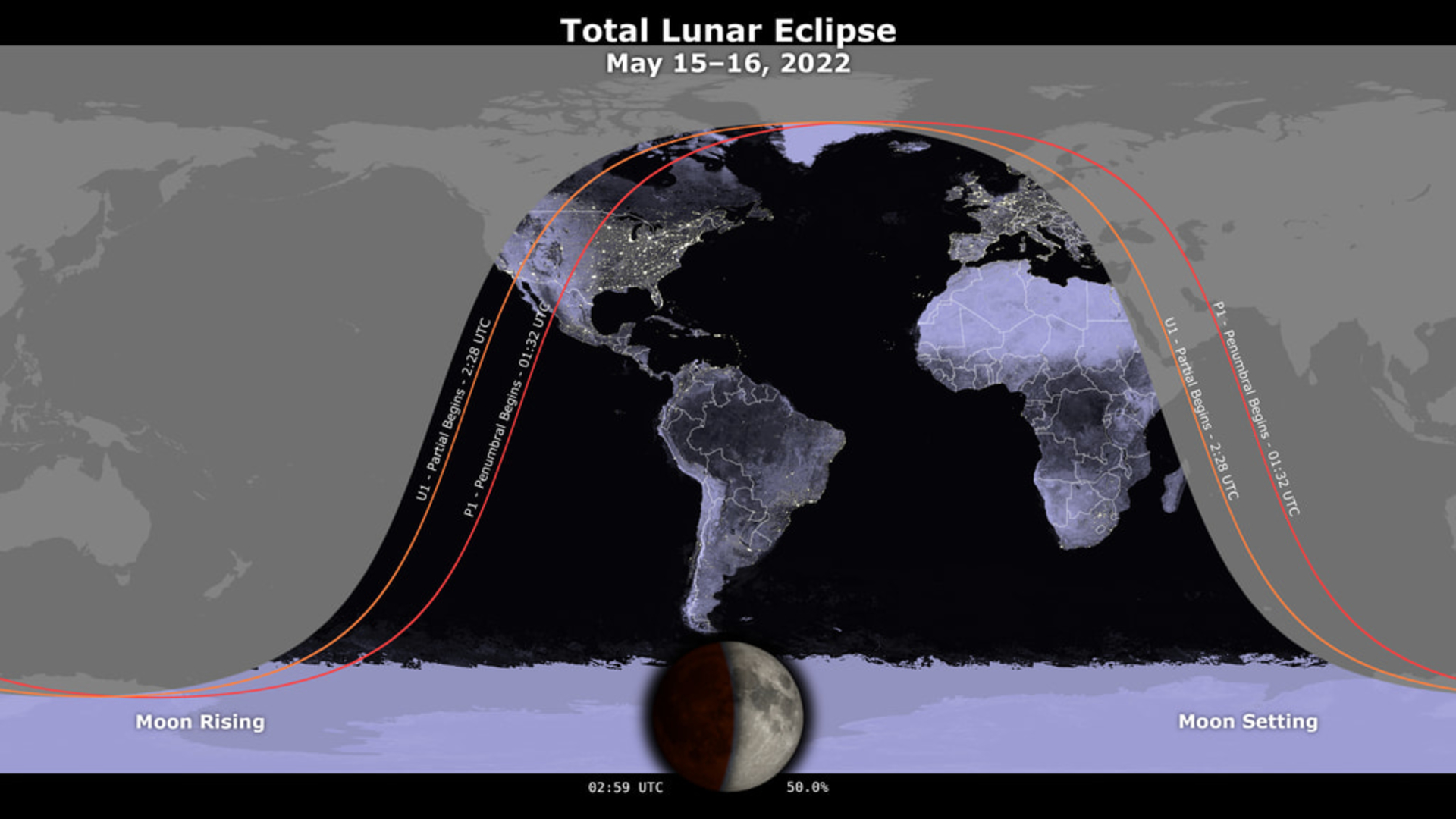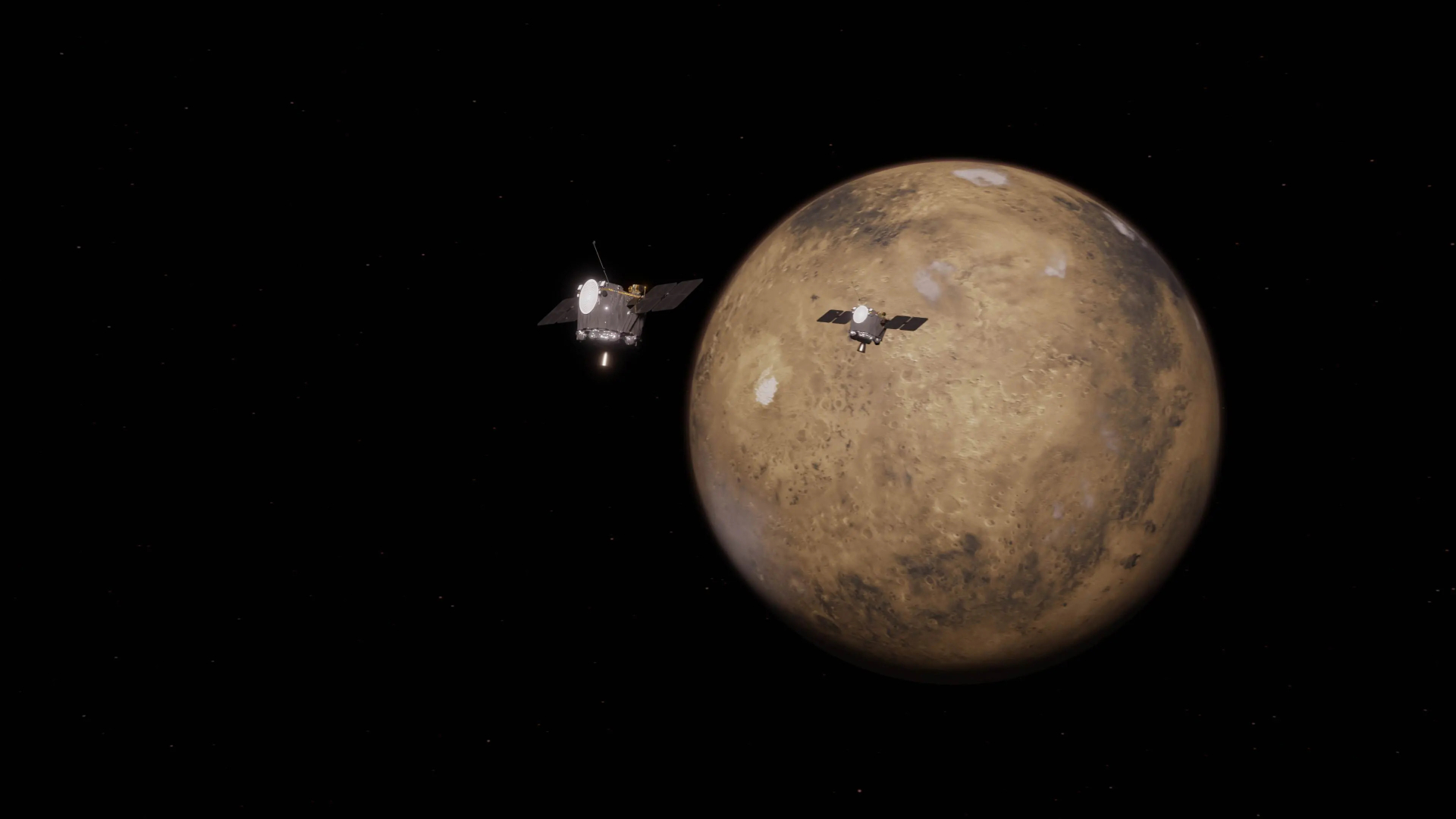The Super Flower Blood Moon lunar eclipse of 2022 occurs tonight! Here's what to expect.
Here's how to catch the epic event in person or online.
Editor's note: The total phase of the Super Flower Blood Moon lunar eclipse has ended. You can read our wrap story on the first total lunar eclipse of 2022.

Looking for a telescope for the lunar eclipse? We recommend the Celestron Astro Fi 102 as the top pick in our best beginner's telescope guide.
It's time to watch the moon make a passage through Earth's shadow.
The event, known as a lunar eclipse, will see the full Flower Moon temporarily turn red overnight on Sunday (May 15) and Monday (May 16), depending on where you are standing. You can watch the Flower Blood Moon eclipse in webcasts, starting at 9:30 p.m. EDT (0130 GMT).
While timing depends on your location, here's when to look for the total eclipse. TimeandDate.com says the partial eclipse phase of the moon begins May 15 at 10:28 p.m. EDT (0228 GMT on May 16). The Blood Moon peak starts May 16 at 12:11 a.m. EDT (0411 GMT). Then the event ends at 1:55 a.m. EDT (0555 GMT).
Eclipse scientist Fred Espenak has listed May 15th's full moon as a so-called supermoon, making this event extra special. The full moon is at its perigee (the closest approach to Earth of the month, in its orbit). So we'll be seeing a slightly larger moon experience the Super Flower Blood Moon eclipse.
Related: Total lunar eclipse of May 2022: Flower Blood Moon guide
The total phase of the eclipse, which will see the moon skirt into the darkest umbral shadow from our planet, will take place from portions of the Americas, Antarctica, Europe, Africa and the east Pacific.
Breaking space news, the latest updates on rocket launches, skywatching events and more!
A penumbral eclipse is visible too, in New Zealand, eastern Europe and the Middle East. The moon will turn slightly darker as the penumbra, or the lighter shadow, of our planet is cast upon the surface. The penumbral eclipse, by the way, will begin about an hour earlier and end about an hour after the partial eclipse.
If you're outside the viewing zone or shut out because of bad weather, however, we also have several options to watch the show online, as long as they have good weather at their own viewing sites.
If you're hoping to photograph the moon, or want to prepare your gear for the total lunar eclipse, check out our best cameras for astrophotography and best lenses for astrophotography. Read our guides on how to photograph a lunar eclipse, as well as how to photograph the moon with a camera for some helpful tips to plan out you lunar photo session.
NASA Science Live Blood Moon webcast
First up is NASA's Science Live YouTube broadcast, embedded above. That will start at 9:32 p.m. May 15 (0132 GMT May 16.)
"Join NASA experts to learn about this incredible natural phenomenon, look through telescope views across the world, and hear about plans to return humans to the lunar surface with the Artemis program," the agency stated in a description. "Have questions? Ask them in our live chat."
Slooh Flower Moon lunar eclipse webcast
Next we have Slooh, a remotely-operated online telescope astronomy service that has its own webcast. Visible on YouTube above, the event will start at May 15 at 9:30 p.m. EDT (May 16 0130 GMT).
"The online telescope's experts will be on hand to explain this spectacular sight from the start of the penumbral phase, through the partial, and then the beautiful total phase that lasts for 1-hour and 19-minutes," Slooh stated.
The broadcast is visible to all with a strong Internet connection, while the entire eclipse will be discussed during a members-only Star Party on Discord. You can learn how to subscribe to Slooh to join at the Slooh.com website.
TimeandDate.com total lunar eclipse webcast
Another YouTube broadcast and live chat is available with TimeandDate.com, starting at 10 p.m. EDT May 15 (0200 GMT May 16). You can catch the show just above this text.
"Our live coverage is your perfect companion to this eclipse, whether it's visible from your location or not. Follow the eclipse from start to finish with us right here," the company stated.
TimeandDate.com has a special Blood Moon May 2022 page for the lunar eclipse, including observing tips and other information.
Griffith Observatory total lunar eclipse webcast
Griffith Observatory of Los Angeles, famous for both movie appearances and astronomy, has its own webcast of the Blood Moon starting May 15 and visible above.
The observatory's webcast will begin at 10:35 p.m. EDT (0235 GMT) and run through 3:50 a.m. EDT (0750 GMT), according to the observatory. (That's 7:35 p.m. to 11:50 p.m. in the local Pacific time zone.) On Tuesday, May 16, Griffith Observatory also will share a full time-lapse lunar eclipse video on its YouTube channel.
Virtual Telescope total supermoon eclipse webcast
Lastly, there's the option to watch the online Virtual Telescope Project supermoon Eclipse webcast at 9:15 p.m. EDT (0215 GMT), with views from across the visibility region. You can see the show just above this text.
Astrophysicist Gianluca Masi of the Project will host the eclipse from Ceccano, Italy, in the center of the country. Follow the show live on the Project's YouTube page or directly from the event broadcast site.
The webcast will include imaging from the following astrophotographers, according to Masi:
- astrophotographer: Gianluca Masi (Rome, Italy);
- astrophotographer: John W. Johnson (Nebraska, USA)
- astrophotographer: Joaquin Fabrega Polleri (Panama);
- astrophotographer: Chris Curwin (Saint John, New Brunswick, Canada);
- astrophotographer: Fernando Rodriguez (Florida, USA);
- astrophotographer: Jim Thompson (Ottawa Valley Astronomy & Observers Group, Canada);
- astrophotographer: Gary Varney (Florida, USA);
- astrophotographer: Karim Jaffer (Montreal Centre, Royal Astronomical Society of Canada);
- coordinator and live comment: astrophysicist Gianluca Masi (The Virtual Telescope Project, Italy).
Editor's Note: If you snap an amazing lunar eclipse photo (or your own eclipse webcast) and would like to share it with Space.com's readers, send your photo(s), comments, and your name and location to spacephotos@space.com.
Follow Elizabeth Howell on Twitter @howellspace. Follow us on Twitter @Spacedotcom and on Facebook.

Elizabeth Howell (she/her), Ph.D., was a staff writer in the spaceflight channel between 2022 and 2024 specializing in Canadian space news. She was contributing writer for Space.com for 10 years from 2012 to 2024. Elizabeth's reporting includes multiple exclusives with the White House, leading world coverage about a lost-and-found space tomato on the International Space Station, witnessing five human spaceflight launches on two continents, flying parabolic, working inside a spacesuit, and participating in a simulated Mars mission. Her latest book, "Why Am I Taller?" (ECW Press, 2022) is co-written with astronaut Dave Williams.






